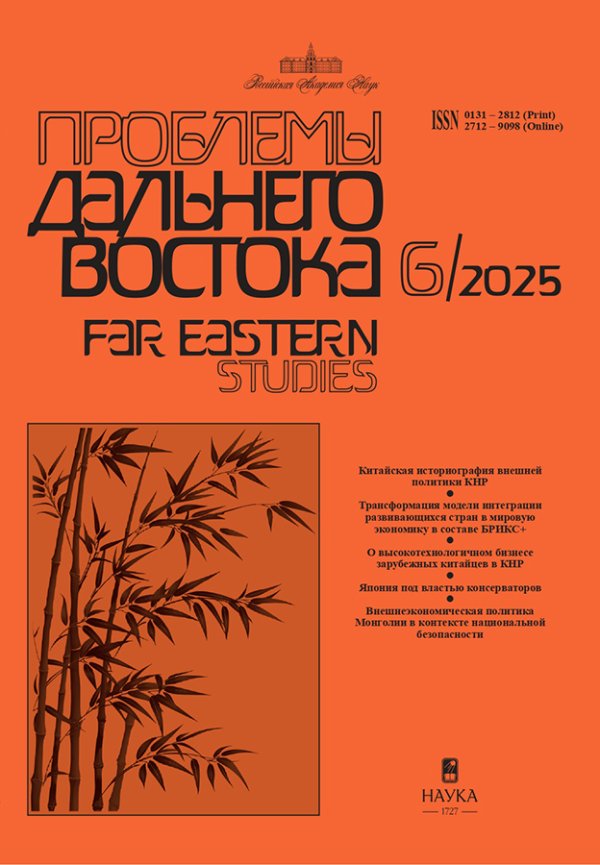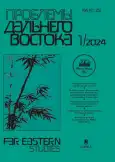Influence of Demographic Processes on the Development of the Education System in Modern China
- Authors: Guleva M.A1
-
Affiliations:
- Lomonosov Moscow State University
- Issue: No 1 (2024)
- Pages: 177-190
- Section: Education
- URL: https://journals.rcsi.science/0131-2812/article/view/259532
- DOI: https://doi.org/10.31857/S0131281224010142
- ID: 259532
Full Text
Abstract
Population structure is an important characteristic of society. As a key element of socio-economic development, the population is linked to the development potential of the nation and the state. Its scale, quality and structure have an important influence on the future direction of the educational system as a whole. In the development of educational activities, the number of students in each school year is directly correlated with the school-age population. The scope of education coverage, planning and organization of school activities are determined by the size of the population and the characteristics of its location. This is the basic logic of the relationship between education and population. Education in many ways influences society as a whole and the processes taking place in it, for example, the processes of population migration, etc. China is entering the era of negative population growth. China is entering an era of negative population growth, and it is important to predict how the education sector will respond to demographic changes. The new demographic trend will primarily affect the development of basic education. The decline in the total school-age population and the specifics of its regional distribution in the course of urbanization have led to a decrease in the number of students in rural areas and an oversupply in urban areas. Under such conditions, it is increasingly difficult to ensure high-quality development of basic education, avoid the emergence of new educational inequalities and a number of other social problems. All these problems of the current basic school will eventually be transmitted to higher education, and given the dynamics of population aging, it is clear that the labour market may be in a very difficult situation in the near future. If proper measures are not taken, systemic educational risks may arise that will have an impact on the overall socio-economic development of the state.
About the authors
M. A Guleva
Lomonosov Moscow State University
Author for correspondence.
Email: guleva.m@gmail.com
ORCID iD: 0000-0002-9226-6011
Ph.D. (Economics), Associate Professor
Moscow, Russian FederationReferences
- Гулева М.А. Образование детей мигрантов в Китае // Азия и Африка сегодня. 2012. № 2. С. 32–35.
- Селиверстова Ю.А. Проблемы детей трудовых мигрантов в КНР на современном этапе: обзор китайских и зарубежных исследований // Проблемы Дальнего Востока. 2022. № 1. C. 149–162. doi: 10.31857/S013128120017797-7
- Wei Si. Higher education expansion and gender norms: evidence from China // Journal of Population Economics. 2022. No. 35. Pp. 1821–1858.
- 中华人民共和国义务教育法. 第十二条 [Закон Китайской Народной Республики об обязательном образовании. Статья 12] // 中华人民共和国中央人民政府.URL: https://www.gov.cn/guoqing/2021–10/29/content_5647617.htm (дата обращения: 15.01.2024).
- 中国人口变化及其对教育发展的影响 [Демографические изменения в Китае и их влияние на развитие образования] // 教研部学校规划建设发展中心. 24.06.2020.URL: https://www.csdp.edu.cn/article/6228.html (дата обращения: 15.01.2024).
- 中国可持续发展报告2019 [Доклад об устойчивом развитии Китая] // United Nations Statistics Division. URL: https://unstats.un.org/sdgs/report/2019/The-Sustainable-Development-Goals-Report2019_Chinese.pdf (дата обращения: 15.01.2024).
- 中国统计年鉴, 恒大研究院 [Статистический сборник Китая, Evergrande Group China] // 国家统计局. URL: https://www.stats.gov.cn/tjsj/ndsj/ (дата обращения: 15.01.2024).
- 开辟教育全面数字化转型新局面 [Открывая новые горизонты для комплексной цифровой трансформации в образовании] // 中华人民共和国教育部. 07.04.2022. URL: http://www.moe.gov.cn/jyb_xwfb/moe_2082/2022/2022_zl12/202204/t20220407_614408.html (дата обращения: 15.01.2024).
- 王萍萍: 人口总量略有下降 城镇化水平继续提高 [Ван Пинпин. Общая численность населения немного сократилась. Уровень урбанизации продолжает расти] // 国家统计局. 18.01.2023. URL: https://www.stats.gov.cn/sj/sjjd/202302/t20230202_1896742.html (дата обращения: 15.01.2024).
- 加快建设高质量教育体系 办好人民满意的教育 [Ускорение создания высококачественной системы образования и организация обучения в соответствии с потребностями людей] // 中华人民共和国教育部. 12.01.2023. URL: http://www.moe.gov.cn/jyb_zzjg/huodong/202301/t20230112_1039188.html?eqid=94f2f04000 04b1ac00000004643e3f2f (дата обращения: 15.01.2024).
- 优先发展教育事业 [Приоритетное развитие образования] // 中华人民共和国教育部. 08.01.2018. URL: http://www.moe.gov.cn/jyb_xwfb/moe_176/201801/t20180108_323931.html (дата обращения: 15.01.2024).
- 刘善槐: 义务教育教师编制的供需矛盾, 改革实践与政策建议 [Лю Шаньхуай. Противоречие между спросом и предложением, практика реформ и политические рекомендации по созданию учительских кадров в системе обязательного образования]. 社会科学文献出版社, 2020年. 第56–71页.
- 南亮进: 中国的教育与经济发展 [Нань Лянцзинь. Образование и экономическое развитие в Китае]. 社会科学文献出版社, 2012年. 第41–52页.
- 翁文艳: 教育生态之脚下的区域治理: 运行机制与关键要素 [Вэнь Вэньян. Региональное управление по следам образовательной экологии: операционные механизмы и ключевые элементы]. 社会科学文献出版社, 2020年. 第123–134页.
- 适应人口变化形势, 优化教育资源配置 [Адаптация к демографическим изменениям и оптимизация распределения образовательных ресурсов] // 中华人民共和国教育部. 12.07.2023. URL: http://www.moe.gov.cn/jyb_xwfb/s5148/202307/t20230713_1068637.html (дата обращения: 15.01.2024).
- 提升教育整体效能 应对人口新形势挑战 [Повышение общей эффективности образования для решения проблем, связанных с новой демографической ситуацией] // 中国教育报. 14.09.2023. URL: http://www.jyb.cn/rmtzgjyb/202309/t20230914_2111092204.html(дата обращения: 15.01.2024).
- 韩烨: 我国教育督导研究进展与论域分析 [Хань Е. Прогресс исследований в области образовательного надзора в Китае и анализ дискурсов]. 社会科学文献出版社, 2022年. 第194–214页.










